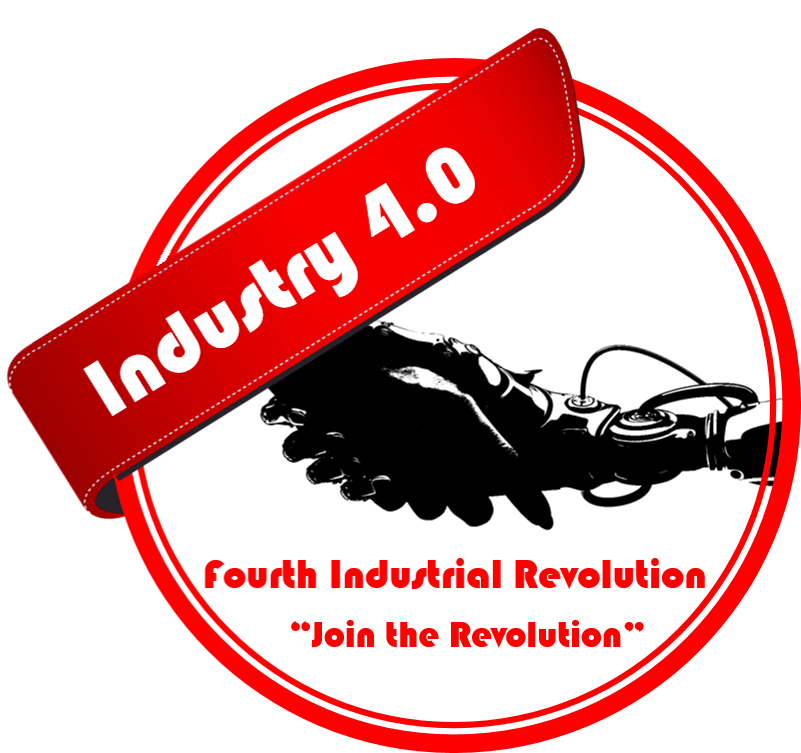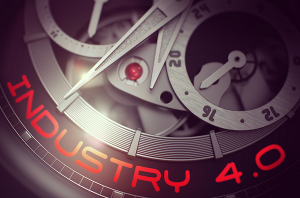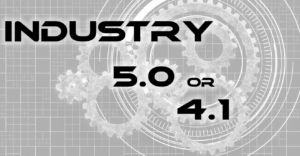Last year, Industry 4.0 (aka the Fourth Industrial Revolution) was the primary focus of the World Economic Forum and discussions on the topic continued at the 2017 WEF meeting. In the interim, myriad articles have been written on the subject. Considering all the discussion, you might be justified in believing that Industry 4.0 is a fait accompli. The fact remains, however, that Industry 4.0 is still very much a revolution in the making. Philippe Virlouvet, an analyst with Dassault Systèmes observes, “A major disruption is underway, and it’s all about the data. Or to be more accurate, it’s about what that data can tell decision-makers about quality, reliability, production processes, supply chains, materials, product design, customer demand — virtually everything a manufacturer cares about!”[1] Anant Kale (@anantkale), Co-Founder and CEO of AppZen, adds, “The first industrial revolution mechanized production using steam power, the second gave us the assembly line for mass production and the third industrial revolution gave us advanced automation using IT and electronics. We are at the cusp of a fourth industrial revolution driven by artificial intelligence, robotics, and web services. This latest revolution is proving to be the most disruptive yet, taking automation to levels most of us can’t imagine.”[2] Although most analysts predict Fourth Industrial Revolution will be widespread, they also warn there are risks as well as benefits.
Benefits Associated with Industry 4.0
The Editor of Fliptin notes, “In essence, Industry 4.0 creates what has been called a smart factory. To elaborate, digital technology has changed the face of industrial and manufacturing world. The convergence of IoT, Artificial Intelligence and robots, among other advancements, has enabled smart factories as well as the quantum leap into Industry 4.0.”[3] The Editor goes on to address some of the benefits of Industry 4.0. They include:
- Enhanced productivity through optimization and automation. Irving Wladawsky-Berger believes AI will play a significant role in improving productivity. “As has been the case with past technology innovations,” he writes, “in the long run AI should make the economy more efficient and lead to productivity growth and higher standards of living. Such an AI productivity boost is particularly important, given that productivity has significantly slowed down over the past decade in the US and other advanced economies.”[4]
- Real-time data for real-time supply chains in a real-time economy. Because Industry 4.0 is all about data, Virlouvet asserts, “The ramifications will reach all the way from the far corner of the remotest shop floor to the corner office. … Theoretically, in this new data ecosystem, it doesn’t necessarily matter what equipment is underlying it. What matters is moving materials, buying and selling them, adjusting to market demand.”
- Greater business continuity through advanced maintenance and monitoring possibilities. The technology creating these new possibilities is the IoT. Chad DeJong, Program Manager at Factora, asserts, “We need to embrace and move toward an environment of connected sensors which gather data about the shop floor environmental conditions, current work, and equipment status.”[5]
- Higher quality products as a result of real-time monitoring, IoT-enabled quality improvement and cobots. Becky Morgan, President of Fulcrum ConsultingWorks, insists the adoption of Industry 4.0 technology “means market testing and scale up from R&D to production will be core competencies. It means data analytics throughout the product life-cycle.”[6]
- Better working conditions and superior sustainability. Steven L. Blue (@StevenLBlue), President & CEO of Miller Ingenuity, writes, “The problem with many CEOs today is they have turned away from the astonishing potential of the workforce and turned toward automation instead. Big mistake. But I hear it all the time. … Too many CEOs view their employees as expandable assets. They should view them as renewable resources. And renew them. Don’t bother with smart manufacturing if you have a dumb workforce. And if your workforce is dumb, it’s your fault, not theirs.”[7] Enhancing the workforce and implementing automation can be complementary. Few employees enjoy doing tedious, repetitive work. Robotic process automation can help relieve them of drudgery and free them to tackle more interesting tasks. Milan Sheth (@MilanShethLive), a Technology Sector Leader at EY India, asserts, “The powerful combination of BOTs and a human workforce should be seen as a true Digital workforce as they complement each other’s capabilities.”[8]
- Personalization opportunities that will earn the trust and loyalty of the modern consumer. Charles A. Horth (@chorth) the CEO of Factora, insists adopting Industry 4.0 technology means “you’re closely linked with your customers. You receive an order; the plant produces based on the information in the order; the output is shipped and invoiced. With the fourth wave, your opportunity to deliver the right thing, at the right time, profitably, takes a giant leap forward.”[9]
The Fliptin Editor concludes, “With an understanding of what you have to gain from harnessing the power of Industry 4.0, taking the actions required to realize it will be all the more easier.” Although the upside of Industry 4.0 practices is substantial, there are also challenges and risks associated with transformation.
Risks Associated with Industry 4.0
The Fliptin Editor notes, “As Industry 4.0 continues to change the way we interact with the world around us, new challenges arise.” He lists a few of those challenges:
- New business models — the definition of a new strategy
- Rethinking your organization and processes to maximize new outcomes
- Understanding your business case
- Conducting successful pilots
- Helping your organization to understand where action is needed
- Change management, something that is too often overlooked
- Examination of company culture
- The genuine interconnection of all departments
- Recruiting and developing new talent
Wladawsky-Berger indicates there are risks associated with AI, one of the core Industry 4.0 technologies. He writes, “One of the best discussions of the challenges of bleeding-edge AI systems is a 2015 article on the Benefits and Risks of Artificial Intelligence by Tom Ditteriech and Eric Horvitz, current and former president respectively of the Association for the Advancement of AI. They list three major risks that we must pay close attention to: [1] Complexity of AI software. … ‘The growing complexity of AI systems and their enlistment in high-stakes roles, such as controlling automobiles, surgical robots, and weapons systems, means that we must redouble our efforts in software quality.’ [2] Cyberattacks. ‘AI algorithms are no different from other software in terms of their vulnerability to cyberattack. But because AI algorithms are being asked to make high-stakes decisions, such as driving cars and controlling robots, the impact of successful cyberattacks on AI systems could be much more devastating than attacks in the past.’ … [3] The Sorcerer’s Apprentice. We must ensure that our AI systems do what we want them to do. ‘In addition to relying on internal mechanisms to ensure proper behavior, AI systems need to have the capability — and responsibility — of working with people to obtain feedback and guidance.'”
Summary
Boston Consulting Group (BCG) analysts, Justin Rose, Vladimir Lukic, Tom Milon, and Alessandro Cappuzzo, affirm Industry 4.0 is a revolution still in the making. They report, “Our survey findings suggest that although US manufacturers recognize the potential of Industry 4.0 to create value, they have yet to fully appreciate the scope and magnitude of the opportunity or find the path to success. … To improve performance and gain a competitive edge, manufacturers must adopt the new digital industrial technologies that are collectively known as Industry 4.0.”[10] Trying to avoid transformation is probably futile. Morgan reminds us, “Darwin made an important point about change. Note that he said surviving species are ‘adaptable’ to change, not that they ‘can run from’ change.” If you want to survive as a company, it’s time to join the revolution.
Footnotes
[1] Philippe Virlouvet, “Is Data the New King of Manufacturing Technology?” Manufacturing Transformation, 12 May 2016.
[2] Anant Kale, “AI Expert: How the Fourth Industrial Revolution Will Impact Our Lives,” PSFK, 7 October 2016.
[3] Editor, “The Challenges of Industry 4.0,” Fliptin, 2 May 2017.
[4] Irving Wladawsky-Berger, “The Fourth Industrial Revolution: Risks and Benefits,” The Wall Street Journal, 24 February 2017.
[5] Chad DeJong, “The Internet of Things is Transforming Manufacturing,” IndustryWeek, 28 October 2016.
[6] Becky Morgan, “The Future of Manufacturing,” IndustryWeek, 30 March 2017.
[7] Steven L. Blue, “Why Smart Manufacturing is a Dumb Idea,” New Equipment Digest, 14 December 2016.
[8] Milan Sheth, “Digital Workforce ‒ The Best of BOT and Human Worlds,” BW Disrupt, 5 July 2017.
[9] Charles A. Horth, “Moving From Dumb Manufacturing to Smart: Catching the Fourth Wave,” IndustryWeek, 27 January 2017.
[10] Justin Rose, Vladimir Lukic, Tom Milon, and Alessandro Cappuzzo, “Sprinting to Value in Industry 4.0,” Boston Consulting Group, 8 December 2016.





